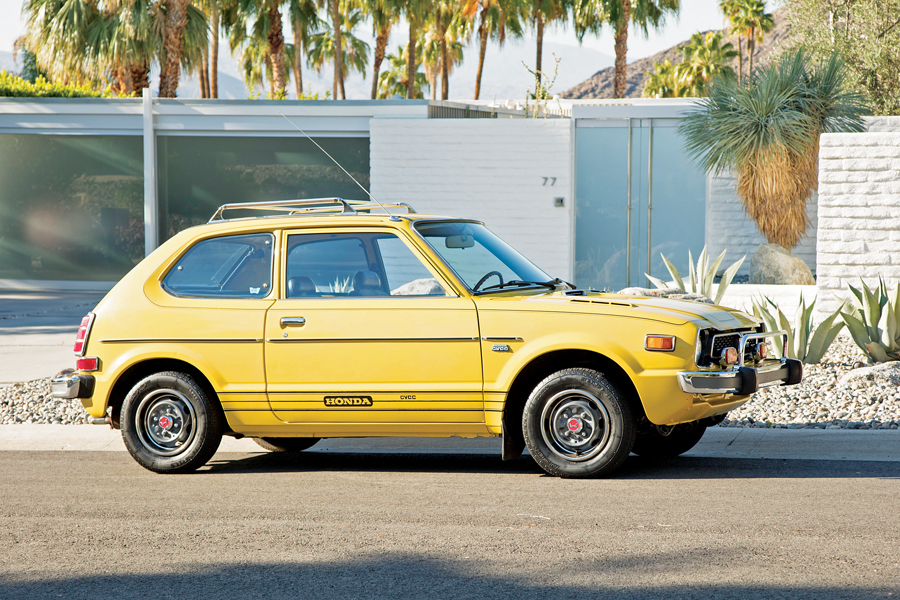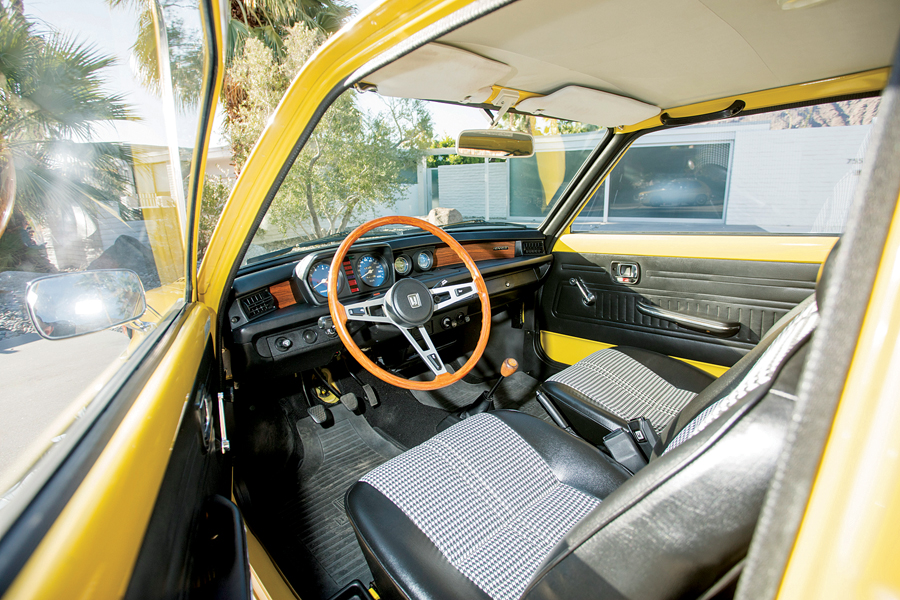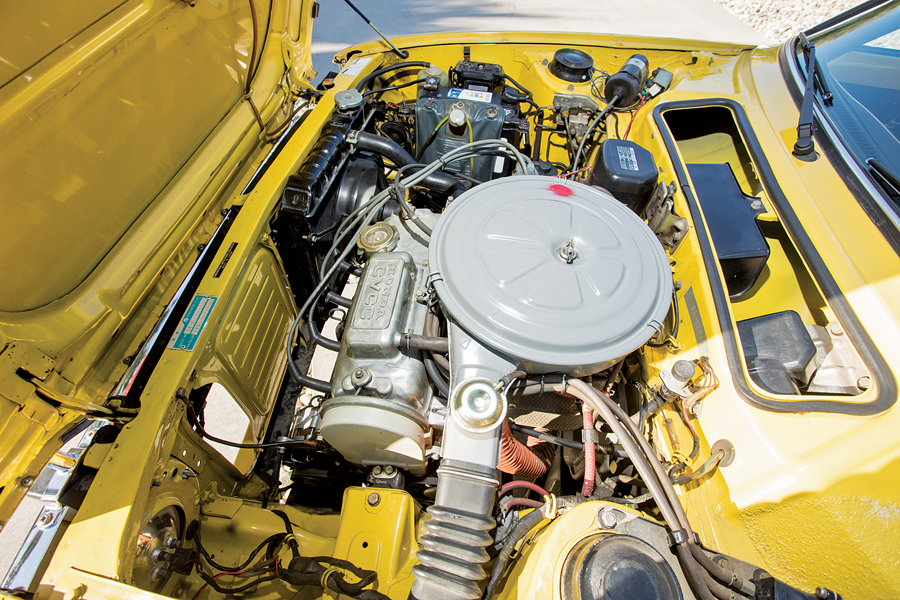
When Honda brought the first Civic subcompact to America in the middle of 1972, the car was not very well received.
Honda’s previous cars had been far too small and idiosyncratic for the American buyer, and early Civics had a tendency to rust so badly that the U.S. government forced Honda to recall and repair them with new fenders.
For a short time it looked as though the Civic might not catch on, even though Datsun and Toyota were making strong inroads at the time, and even the quirky rotary-engine Mazda was getting some traction.
The gas crunch of 1973 changed all that. Suddenly the fact that you could get 40 mpg out of a Civic made up for a lot of faults. A year later Honda brought out the CVCC engine. Those letters stood for “Compound Vortex Controlled Combustion,” which was an innovative SOHC cylinder-head design that improved engine efficiency to the point that the Civic did not require a catalytic converter to meet mid-1970s emissions standards. The 1.5-liter CVCC engine gave you 53 horsepower. That was only slightly better than the standard Honda engine, but it was enough to start selling millions of Civics. Honda’s market in the United States was established.
A belly-button car
By the late 1970s, a Honda Civic was a lot like a navel — everybody had one, or at least you’d seen one lately. In that era, most families bought a new car every three or four years, so by 1980 there were lots of used Civics bouncing down the road on tired shocks, while their teenage drivers blew out the speakers and kept the gas pedal nailed to the floor.
A few Civics actually survived that treatment. (Sadly, mine did not. Requiescat in pace, little guy.)
The CVCC engine was mated to one of three transmissions in this era. Buyers could choose the standard 4-speed manual, a 5-speed manual or a 2-speed Hondamatic. The engine was mounted transversely and drove the front wheels.
You got front-disc brakes and rear drums. The front suspension was a McPherson strut design, and the Civic had independent rear suspension. That suspension, plus the short wheelbase, made the Civic eager to turn, so what it lacked in torque it made up for in handling. After all, it was still a Japanese interpretation of a Mini Cooper.
However, torque steer was extreme due to the Civic’s unequal-length axle half-shafts. Any attempt to launch the Civic from a standing start could rip the steering wheel out of your hands and send the car careening off at an angle. Experienced Civic pilots knew to counter steer as they dropped the tack hammer.
The interior of a mid-1970s Civic was spartan, to say the least. Standard equipment was an AM radio and a heater. AM/FM, cassette or 8-track was optional. Air conditioning was also optional, but who paid that kind of extra money for a Civic? Seats were either sticky vinyl or had patterned cloth inserts. The term “econo-box” was invented for this car.
Yet for all that, anyone who ever owned an early Civic is guaranteed to smile when you mention the cars. They were fun, economical, tough to kill — and they got you where you were going.
A well-kept example
The subject sale is a true rarity, as one person owned the car from new until he passed away in 2010. A dealer then lightly restored the car and it was placed in a collection. You can’t ask for better than that, especially with this generation of Civic. The car appears to be a very good legitimate survivor.
The fact that the car was kept in the Colorado desert helped it avoid the rust that plagued everything in the 1970s, and it appears the car was garaged and lightly driven. Some wear on the pedal covers and patina on the wooden shift knob (standard on CVCC models) show that the car was loved. The 78,413 miles showing on the odometer are credible. Most of these cars were in junkyards by 150,000 miles.
This car also has several important options and OEM accessories.
It has the cloth insert upholstery (refreshed during the restoration), and the luggage rack on top. You don’t want to actually put a piece of luggage up there if you want to maintain 55 mph. There’s also a rare front bumper overrider installed. A rear overrider was also available as a separate accessory, but it was apparently not installed on this car. The protective side spear and the side decals were also Honda accessories in 1977. The only visible non-OEM feature on this car is the dealer-installed pinstriping on the hood, rear hatch, and along the tops of the fenders around the side windows.
If this is not the best first-generation Honda Civic left in America, it’s pretty close. The $15,400 price was fair for the condition and options presented.
Few Civics of this era are ever sold at auction, so this is a high-water mark for the breed. If this car tickles your memory like it does mine, and you’re lucky enough to find a good example, you will probably get it much cheaper than this one through eBay or various classified ads. But really, who ever thought a Civic would be considered a classic, anyway? ♦

